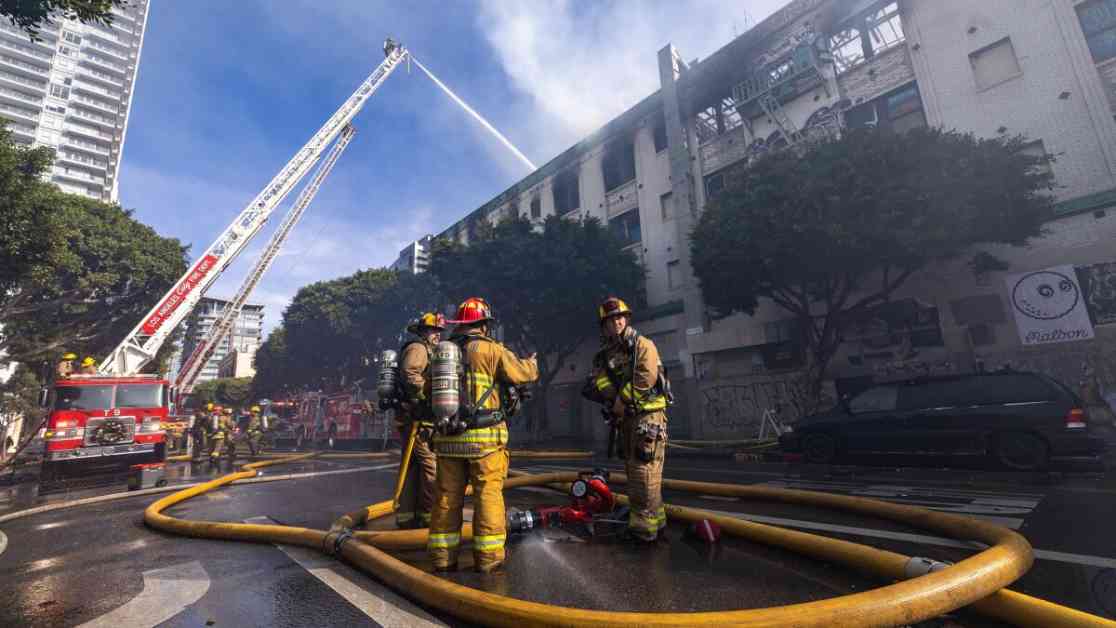Former Morrison Hotel Destroyed by Fire in Downtown LA
A historic building in downtown Los Angeles, the former Morrison Hotel, known for its association with the iconic rock band The Doors, was engulfed in flames on Thursday morning. The Los Angeles Fire Department responded to the blaze at around 11 a.m. on South Hope Street, where the four-story vacant building was ablaze.
Dangerous Rescue Efforts
Upon arrival, firefighters found several dozen people had already evacuated the building, but three individuals were trapped on the third floor. It took fire crews one hour and 37 minutes to extinguish the fire, with thankfully no injuries reported. The roof of the building had partially collapsed, making it challenging for firefighters to completely put out the remaining pockets of fire. The cause of the blaze remains under investigation.
Building’s Colorful Past
The former Morrison Hotel, vacant for over 15 years, was used as a training site for Los Angeles Fire Department crews. The 50,000-square-foot building, constructed in 1914, was red-tagged by the Los Angeles Department of Building and Safety before the fire. The fate of the building will be decided by the Building and Safety Department.
Controversial Transformation Plans
The building, once used for low-income housing and later planned for luxury residential units, had a tumultuous history. In 2004, tenants filed a lawsuit against the owners, citing exposure to mold, mildew, and other hazardous conditions. Despite plans for redevelopment, the building remained vacant until it was purchased by the AIDS Healthcare Foundation in an effort to convert it into affordable housing.
Mark Dyer, vice president of operations for the AIDS Healthcare Foundation, expressed frustration with homeless individuals trespassing in the building, despite efforts to secure it. This unfortunate incident has stalled the transformation plans for the Morrison Hotel.
The destruction of the former Morrison Hotel serves as a poignant reminder of the challenges faced by historic buildings in urban areas and the importance of preserving architectural landmarks for future generations to enjoy.
















